The University of Colombo is a public research university located primarily in Colombo, Sri Lanka. It is the oldest institution of modern higher education in Sri Lanka. Specialised in the fields of natural, social, and applied sciences as well as mathematics, computer sciences, and law. It is ranked among the top 10 universities in South Asia.
Moratuwa is a large suburb of Colombo, on the southwestern coast of Sri Lanka, near Dehiwala-Mount Lavinia. It is situated on the Galle–Colombo main highway, 18 km (11 mi) south of the centre of Colombo. Moratuwa is surrounded on three sides by water, except in the north of the city, by the Indian Ocean on the west, the Lake Bolgoda on the east and the Moratu river on the south. According to the 2012 census, the suburb had a population of 168,280.

Established in 1870 as the Colombo Medical School, the Faculty of Medicine of the University of Colombo, Sri Lanka, is the second oldest medical school in South Asia.It is considered to be the top most medical faculty in the country which requires the highest entry qualification in GCE Advanced Level examination.
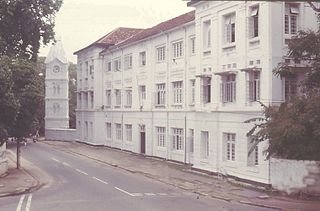
Ceylon Medical College was a public medical school in Ceylon. The college was established in 1870 as the Colombo Medical School. The college was based in Colombo. The college was merged with Ceylon University College in 1942 to form the University of Ceylon. The medical college became the university's faculty of medicine. The college was also known as Colombo Medical College.
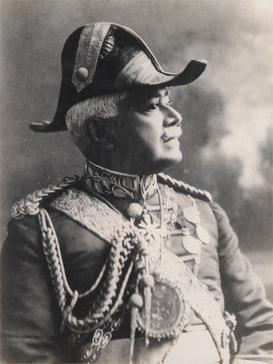
Sir Solomon Dias Abeywickrema Jayatilleke Senewiratna Rajakumaruna Kadukeralu Bandaranaike, was a Ceylonese colonial-era headmen. He was appointed as Head Mudaliyar and the aide-de-camp to the British Governor of Ceylon, therefore he was one of the most powerful personalities in British colonial Ceylon.

Charles Henry de Soysa Dharmagunawardana Vipula Jayasuriya Karunaratna Disanayaka popularly known as Charles Henry de Soysa, JP was a Ceylonese entrepreneur and philanthropist. He was a pioneering planter, industrialist and was the wealthiest Ceylonese of the 19th century. He was instrumental in the establishment of the first Ceylonese bank, the Moratuwa carpenters guild, the Ceylon Agricultural and National Associations. He is widely regarded as the greatest philanthropist of the island for contributions which includes the De Soysa Maternity Hospital, the Prince and Princess of Wales Colleges, the Model Farm Experimental Station and many other institutions and acts of charity, establishing infant-maternal healthcare and secular education for girls in the country. He would have been the island's first Knight Bachelor, but having died prior, his widow was given the rare honor of the use of the style and dignity of wife of the Knight Bachelor and was known as Catherine, Lady de Soysa.
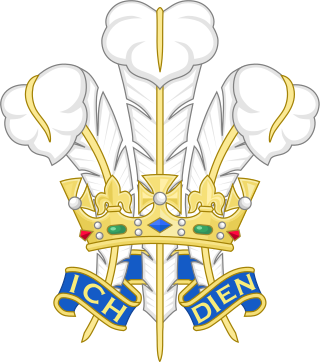
Prince of Wales' College is a selective entry boys' school situated in Moratuwa, a suburb of Colombo, Sri Lanka. Prince of Wales College, Moratuwa, was founded and endowed in 1876 by Sir Charles Henry de Soysa, a famous 19th century Sri Lankan philanthropist and was named in honour of Prince Albert, Prince of Wales

Sir James Peiris was a prominent leader in the Sri Lankan independence movement, the first elected Vice-President of the Legislative Council of Ceylon and the first native Governor of Ceylon (Acting).
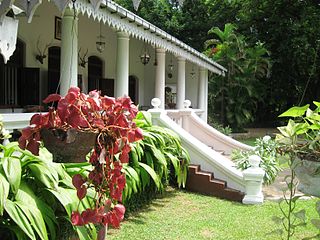
Walauwa or walawwa is the name given to a feudal/colonial manor house in Sri Lanka of a native headmen. It also refers to the feudal social systems that existed during the colonial era.
William Lancaster D.D. (1650–1717) was an English churchman and academic, Provost of The Queen's College, Oxford.
Saifee Villa is a mansion at 102, Thurstan Road in Colombo 03, Sri Lanka, located between Thunmulla Junction and College House, Colombo.

Ceylon University College was a public university college in Ceylon. Established in 1921, it was Ceylon's first attempt at university education. The college didn't award degrees under its own name but prepared students to sit the University of London's external examination. The college was based in Colombo. The college was merged with Ceylon Medical College in 1942 to form the University of Ceylon. The college was also known as University College, Ceylon; University College, Colombo; and Colombo University College. Its buildings and grounds are now occupied by the University of Colombo which is considered its successor.
The urban campus of University of Colombo is located in Colombo, Sri Lanka, primarily situated around Cinnamon Gardens.

Sir Hilarion Marcus Fernando, FRCP was a pre-independence Ceylonese statesman, physician and banker. He was a member of both the executive council and legislative council as well as the chairman of the State Mortgage Bank of Ceylon.
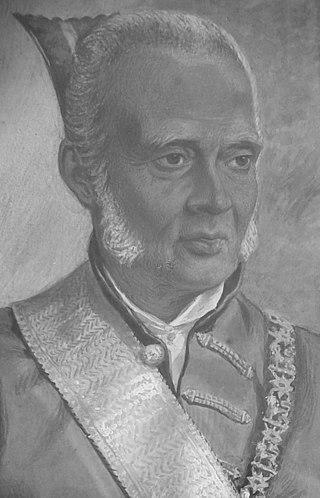
Gate Mudaliyar Jeronis de Soysa was a pioneering Ceylonese entrepreneur and philanthropist. He was a pioneer coffee planter and an industrialist who became the wealthiest Ceylonese of the 19th century by establishing the largest native commercial enterprise of the era. He was instrumental in the establishment of the first Ceylonese bank and is often referred to as a father of private enterprise in British Ceylon. He was the first Mudaliyar to be elevated in recognition of his philanthropy.
Thomas Amarasuriya, OBE was a Ceylonese planter and politician. He was a member of the State Council of Ceylon and President of the Senate of Ceylon. He was the first Ceylonese Chairman of the Planters Association and a brother of H. W. Amarasuriya.
Harold Peiris (1904–1988) was a Sri Lankan lawyer, author, scholar, teacher, patron of the arts, and philanthropist. He was the co-founder of the Lionel Wendt Art Centre and its sole life-trustee. He is sometimes confused with Harry Peiris, a cousin and contemporary, who was a member of the Colombo '43 Group of artists and established the Sapumal Foundation.
Trinity College, Kandy, is an independent private school for boys in Kandy Sri Lanka. It was founded in 1872 by British Anglican missionaries of the Church Missionary Society, modelled on British Public school tradition. Trinity offers primary and secondary education, and is a leading private school in Sri Lanka managed by the Anglican Church of Ceylon.
Sir Lambert Wilfred Alexander de Soysa also known as Sir Wilfred de Soysa was a Ceylonese entrepreneur, landed proprietor and philanthropist. He was the seventh son of Sir Charles Henry de Soysa and Lady Catherine de Soysa. Born at Alfred House Colombo and educated privately, then at Royal College, Colombo and Prince of Wales' College, Moratuwa, he completed his studies at the Royal Agricultural College, England.
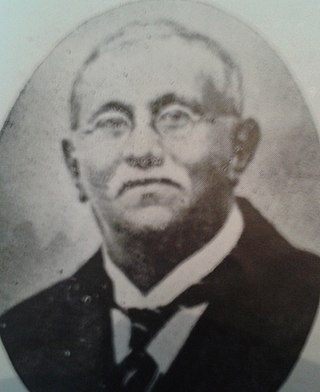
Alfred Joseph Richard de Soysa, also known as A. J. R. de Soysa was a Ceylonese landed proprietor and politician. He was a member of the Legislative Council of Ceylon.











